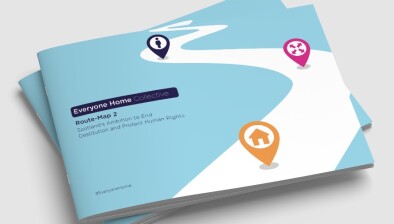Blog: DWP’s wilful ignorance over the impact of local housing allowance

Adopting a bunker mentality is flawed when credible warnings are stacking up, says Kate Webb.
This week’s confirmation that Local Housing Allowance (LHA) rates will not be applied to social housing was a welcome U-turn by the government. However, while it avoids creating new problems it doesn’t address the pre-existing concerns around LHA for private tenants.
Despite rising rents, LHA rate are frozen until 2020. This will put more than one million households at risk of homelessness by 2020. This is the number who will live in a local authority area where LHA rates – the maximum amount of housing benefit a private renter can receive – will be worth less than the cheapest quarter of rents locally. This will make it difficult to find affordable accommodation, raising the risk that people will be left with nothing at all.
Homelessness triggered by the loss of a private tenancy has soared since the LHA cuts first began in 2011. A recent National Audit Office investigation into homelessness agreed that “the ending of private sector tenancies has overtaken all other causes to become the biggest single driver of statutory homelessness in England”.
Why are people losing tenancies? The official data collected by local authorities doesn’t ask this question. But in Shelter’s experience as a service provider, welfare reform is a significant part of the picture. Tenancies are ending as rents rise above what people on benefits can afford, landlords lose faith in the housing benefit market and chose to re-let to wealthier tenants, or just because England’s insecure private rental laws allow landlords to end a tenancy for no reason. More significantly, the lack of other affordable options locally means that people are then unable to find a new home themselves and are forced to present to the local authority as homeless.
In an attempt to know more, we launched a major investigation last year into the state of homelessness. This found that cuts to housing benefit had worsened affordability in the private rented sector, making it harder for people to find their own accommodation and avoid homelessness.
We are not a maverick lone voice. The Local Government Association has also warned that the local housing allowance freeze is making an already difficult situation more challenging. And the Homelessness Monitor also found that Local Housing Allowance cuts were creating a barrier to local authorities trying to relieve homelessness.
The National Audit Office looked in more detail at what has been fuelling the rise in homelessness. It found that the decreased affordability of tenancies was “likely to have contributed to the increase in homelessness” and “changes to Local Housing Allowance are likely to have contributed to the affordability of tenancies for those on benefits, and are an element of the increase in homelessness”.
In particular, reductions in welfare combined with rising rents have made properties less affordable “which in turn is likely to be contributing to homelessness caused by the ending of an assured shorthold tenancy”.
You would expect the NAO report to be a wake-up call to government. The Conservative manifesto after all pledged to combat homelessness through a new Homelessness Reduction Taskforce. If the government is committed to reducing homelessness you would expect it to heed warnings that its own housing benefit policy was creating an avoidable risk of homelessness.
However, the department has been remarkably uncurious about the impact of housing benefit reforms on homelessness. The NAO report noted that “the government has not fully assessed the impact of its welfare reforms on homelessness” and there’s no sign of them changing this approach.
This is particularly frustrating for us, as our warnings about the impact of LHA changes on low income households have been met by the claim that “there’s no clear evidence” housing benefit cuts are driving homelessness.
When the housing benefit reforms first began in 2011 the DWP conceded the need to monitor the impact. However, this was short-lived. The one major investigation into LHA reforms concluded before the reforms had fully rolled out.
The department has even stopped the lowest level monitoring. It regularly surveys local authorities on a range of housing benefit issues in its local authority insight surveys. Curiously, it stopped asking about the impact of local housing allowance changes in 2014 even though local authorities were making clear links between households’ inability to pay the rent and rising homelessness.
In the July 2013 survey 57% of local authorities said there had been an increase in homelessness among private tenants since the new LHA regulations kicked in. And in the July 2014 survey, a third of London boroughs said that rent arrears because of LHA changes were among the main reasons for homelessness acceptances.
After that, nada.
DWP defends its housing benefit policy on the grounds that there is “no clear evidence” it’s driving homelessness, yet ignores credible warnings and refuses to conduct its own investigations. It’s a familiar picture of denial: the current focus on Universal Credit is exposing the flaws that welfare rights organisations warned about from its inception. Such a bunker mentality would be flawed at the best of times, but when the government is apparently committed to reducing homelessness, it becomes inexplicable.








